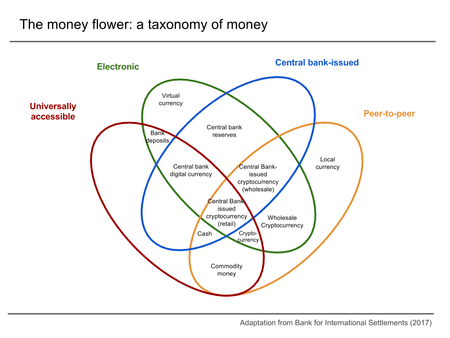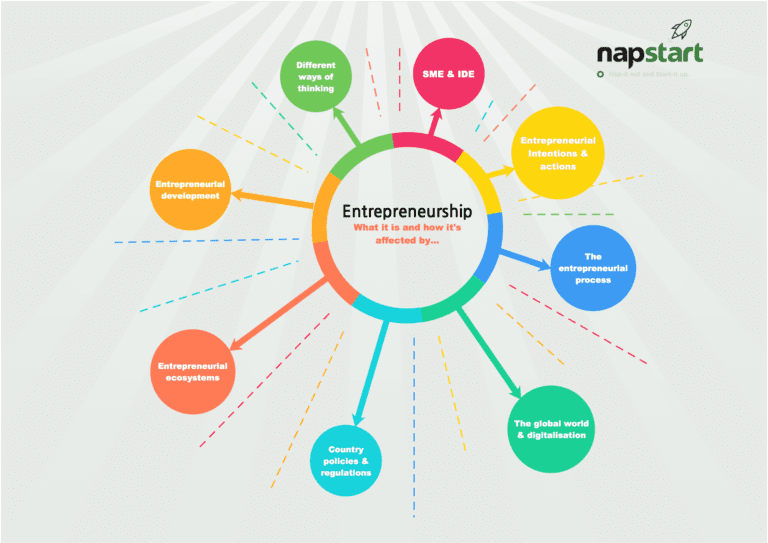Table of Contents
Introduction:
Future of Cybersecurity: In today’s interconnected world, where technology plays an integral role in our daily lives, the importance of cybersecurity cannot be overstated. As cyber threats continue to evolve and become more sophisticated, it is crucial to stay ahead of the curve by embracing emerging technologies and keeping up with the latest trends. In this article, we will delve into the future of cybersecurity, examining the promising technologies and trends that will shape the landscape of digital defense.
.jpg)
Artificial Intelligence (AI) and Machine Learning (ML) in Cybersecurity: A Paradigm Shift in Digital Defense
Artificial intelligence (AI) and machine learning (ML) have emerged as game-changers in the cybersecurity landscape. By harnessing the power of these technologies, we are witnessing a paradigm shift in how we defend against increasingly sophisticated cyber threats.
AI and ML in Threat Detection and Response:
- Real-Time Analysis: AI and ML algorithms can rapidly analyze massive volumes of data from diverse sources, such as network traffic, logs, and user behavior, to identify patterns and anomalies that could signal a potential cyberattack.
- Adaptive Learning: These systems continuously learn from past incidents and evolving threat intelligence, adapting their detection models and response mechanisms to stay ahead of new attack vectors.
- Enhanced Accuracy: AI and ML significantly reduce false positives, minimizing the time and resources wasted on investigating benign events.
- Automated Response: In the event of a detected threat, AI and ML can trigger automated responses, such as isolating affected systems, blocking malicious traffic, or deploying countermeasures, to mitigate the impact and prevent further damage.
AI and ML in Proactive Defense:
- Threat Prediction: By analyzing historical data and threat intelligence, AI and ML models can predict potential vulnerabilities and emerging attack trends, allowing organizations to proactively address weaknesses and deploy defenses before they are exploited.
- Vulnerability Assessment: AI-powered tools can automate vulnerability scanning and assessment, identifying potential weaknesses in software, systems, and networks.
- Adaptive Security: AI-driven security systems can dynamically adjust their configurations and policies based on real-time threat intelligence and changing risk levels.
Challenges and Considerations:
- Adversarial AI: As defenders leverage AI and ML, attackers are also using these technologies to create more sophisticated and evasive threats. This creates an ongoing arms race that demands continuous innovation and adaptation.
- Data Requirements: AI and ML models heavily rely on large, diverse, and high-quality data for training and effectiveness. Organizations must ensure the availability of relevant data while addressing privacy and security concerns.
- Skill Gap: The implementation and management of AI and ML in cybersecurity require specialized skills and expertise. Organizations need to invest in training and development to build the necessary capabilities.
The Future of Cybersecurity with AI and ML:
- AI-Driven Decision Making: As AI and ML technologies mature, we can expect a greater reliance on these systems for making complex security decisions, enabling faster and more effective responses to cyber threats.
- Human-Machine Collaboration: The future of cybersecurity will likely involve a close collaboration between human experts and AI systems, where AI augments human capabilities with its speed, scale, and analytical power.
- Continuous Innovation: The field of AI and ML in cybersecurity is constantly evolving. Ongoing research and development will lead to more sophisticated algorithms, improved threat detection and response capabilities, and a stronger defense against the ever-evolving landscape of cyber threats.
IoT Security: Safeguarding the Connected World
The Internet of Things (IoT) has ushered in an era of unprecedented connectivity, where everyday objects are embedded with sensors, software, and network connectivity, enabling them to collect and exchange data. From smart homes and wearable devices to industrial control systems and critical infrastructure, the proliferation of IoT devices has transformed our lives and revolutionized various industries. However, the widespread adoption of IoT technology has also brought about significant security challenges. The interconnected nature of IoT devices creates a vast attack surface, making them susceptible to cyber threats that can compromise sensitive data, disrupt operations, and even cause physical harm.
The Growing Threat Landscape:
As the number of connected devices continues to soar, so does the risk of cyberattacks. IoT devices often lack robust security measures, making them vulnerable to various threats, including:
- Unauthorized Access: Hackers can exploit vulnerabilities in IoT devices to gain unauthorized access to networks and sensitive data.
- Data Breaches: Weak security protocols can lead to data breaches, compromising personal information, financial data, and confidential business information.
- Malware and Ransomware Attacks: IoT devices can be infected with malware or ransomware, disrupting operations and causing financial losses.
- Distributed Denial of Service (DDoS) Attacks: Hackers can hijack IoT devices to launch DDoS attacks, overwhelming networks and services with traffic.
- Physical Attacks: Insecure IoT devices can be manipulated to cause physical damage, such as disabling critical infrastructure or causing accidents.
Essential Security Measures for IoT Devices:
To mitigate these risks, it is crucial to implement stringent security measures across the entire IoT ecosystem. Key security measures for IoT devices include:
- End-to-End Encryption: Encrypting data in transit and at rest ensures that sensitive information remains confidential even if intercepted by attackers.
- Strong Authentication: Implementing strong authentication mechanisms, such as multi-factor authentication and biometric authentication, helps prevent unauthorized access to devices and networks.
- Secure Firmware and Software Updates: Regularly updating firmware and software patches critical vulnerabilities that can be exploited by attackers.
- Network Segmentation: Segmenting networks isolates IoT devices from critical systems and data, minimizing the impact of a potential breach.
- Intrusion Detection and Prevention Systems (IDPS): IDPS solutions can monitor network traffic and identify suspicious activity, alerting administrators to potential threats.
- Continuous Monitoring and Threat Intelligence: Continuous monitoring of IoT devices and networks, combined with up-to-date threat intelligence, allows for early detection and mitigation of vulnerabilities and attacks.
The Future of IoT Security:
As IoT technology continues to evolve, so too must the security measures designed to protect it. The future of IoT security lies in a multi-layered approach that combines technical solutions with robust policies and procedures. Some key areas for future development include:
- Zero Trust Security: Implementing a zero trust security model, where every device and user is treated as a potential threat, helps minimize the risk of unauthorized access.
- Artificial Intelligence (AI) and Machine Learning (ML): AI and ML algorithms can analyze vast amounts of data to identify patterns and anomalies that could indicate a potential attack.
- Blockchain Technology: Blockchain can provide a secure and tamper-proof way to track and authenticate IoT devices and data.
- Standardization and Regulation: Establishing industry-wide security standards and regulations can help ensure that IoT devices are designed and deployed with security in mind.
Blockchain Technology: A Paradigm Shift in Cybersecurity
Blockchain technology, renowned for its role in the rise of cryptocurrencies, is rapidly emerging as a game-changer in the realm of cybersecurity. While most people associate blockchain with Bitcoin and other digital currencies, its potential applications extend far beyond the financial sector.
The Decentralized Advantage:
At its core, blockchain is a decentralized, distributed ledger technology that records transactions across a network of computers. This decentralized nature eliminates the need for a central authority or intermediary, making it inherently more secure and resilient to attacks.
Key Cybersecurity Benefits:
- Enhanced Security: Blockchain’s cryptographic algorithms and consensus mechanisms ensure that data is tamper-proof and resistant to unauthorized modification. This makes it an ideal solution for protecting sensitive information from cyber threats.
- Transparency: All transactions recorded on a blockchain are transparent and verifiable by all participants in the network. This transparency fosters trust and accountability, reducing the risk of fraudulent activities.
- Immutability: Once data is added to a blockchain, it is virtually impossible to alter or delete. This immutability provides a reliable audit trail and ensures the integrity of data over time.
- Secure Digital Identities: Blockchain can be used to create secure digital identities that are resistant to identity theft and fraud. This can streamline authentication processes and enhance security for online transactions.
- Data Provenance: Blockchain can track the origin and history of data, ensuring its authenticity and provenance. This is particularly valuable in supply chain management and other industries where data integrity is critical.
Combatting Cyber Threats:
Blockchain technology offers innovative solutions to address a wide range of cyber threats:
- Data Breaches: By decentralizing data storage and encrypting it, blockchain significantly reduces the risk of data breaches. Even if one node in the network is compromised, the data remains secure on other nodes.
- Identity Theft: Blockchain-based digital identities are more secure than traditional methods, making it harder for cybercriminals to steal personal information.
- Fraud: Blockchain’s transparency and immutability make it difficult to commit fraud, as all transactions are recorded and verifiable.
- Ransomware: Blockchain-based smart contracts can automate secure data backups and recovery processes, mitigating the impact of ransomware attacks.
The Future of Blockchain in Cybersecurity:
As blockchain technology continues to mature, its applications in cybersecurity are expected to expand. We can anticipate the development of more sophisticated blockchain-based security solutions, including:
- Secure Communication Channels: Blockchain can enable secure and private communication channels that are resistant to eavesdropping and interception.
- Decentralized Security Infrastructure: Blockchain can be used to create decentralized security systems that are more resilient to attacks than traditional centralized systems.
- Cyber Threat Intelligence Sharing: Blockchain can facilitate secure and anonymous sharing of cyber threat intelligence among organizations, enhancing overall security posture.
Biometric Authentication:
Traditional passwords are increasingly vulnerable to hacking attempts, leading to a rise in biometric authentication methods. Biometrics, such as fingerprints, facial recognition, and iris scans, provide a more secure and convenient way to authenticate users. As the technology advances and becomes more accessible, biometric authentication will play a vital role in safeguarding digital assets, preventing unauthorized access, and mitigating identity theft.
Cloud Security: The Cornerstone of Modern Cybersecurity
The rapid proliferation of cloud computing has revolutionized how businesses operate and store data. While cloud technology offers unprecedented flexibility and scalability, it also introduces unique security challenges that require robust solutions.
Defining Cloud Security:
Cloud security encompasses a broad range of technologies, policies, and controls designed to protect data, applications, and infrastructure hosted in cloud environments. It aims to safeguard sensitive information from unauthorized access, data breaches, and cyberattacks.
Key Components of Cloud Security:
- Data Protection: Implementing strong encryption algorithms, access controls, and data loss prevention mechanisms to ensure the confidentiality and integrity ofdata stored in the cloud.
- Encryption: Utilizing encryption both at rest and in transit to protect data from unauthorized interception and tampering.
- Access Controls: Enforcing strict authentication and authorization procedures to prevent unauthorized access to cloud resources.
- Threat Intelligence: Leveraging real-time threat intelligence to identify and respond to emerging security threats and vulnerabilities.
- Security Monitoring: Implementing continuous monitoring of cloud environments to detect suspicious activity and potential security breaches.
- Incident Response: Establishing well-defined incident response plans to mitigate the impact of security incidents and ensure rapid recovery.
The Importance of Cloud Security in Today’s Landscape:
As more organizations migrate their critical workloads and sensitive data to the cloud, the need for robust cloud security becomes paramount. A comprehensive cloud security strategy is essential to mitigate a variety of risks:
- Data Breaches: Cloud environments can be targeted by cybercriminals seeking to steal sensitive data. Cloud security measures such as encryption, access controls, and intrusion detection systems can help prevent and detect such breaches.
- Insider Threats: Employees or contractors with malicious intent can pose a significant risk to cloud security. Implementing strong access controls, activity monitoring, and data loss prevention mechanisms can mitigate insider threats.
- Unauthorized Access: Weak passwords, misconfigured settings, or vulnerabilities in cloud applications can lead to unauthorized access. Regular security assessments, vulnerability scanning, and patching are crucial to addressing these risks.
- Regulatory Compliance: Many industries are subject to stringent data protection regulations. Cloud security ensures compliance with these regulations, avoiding legal penalties and reputational damage.
The Future of Cloud Security:
The future of cloud security lies in advanced solutions that can seamlessly integrate with diverse cloud environments, scale dynamically to meet changing demands, and provide real-time threat detection and response capabilities. Machine learning and artificial intelligence will play an increasingly important role in identifying and mitigating emerging threats.
Conclusion:
As the digital landscape evolves, so do the cybersecurity threats we face. Embracing emerging technologies and staying informed about the latest trends is paramount to ensure robust digital defense. Artificial intelligence, machine learning, IoT security, blockchain technology, biometric authentication, and cloud security are just a few areas that will shape the future of cybersecurity. By harnessing these technologies and implementing robust security measures, individuals and organizations can navigate the evolving threat landscape with confidence, safeguarding their digital assets and protecting sensitive information. Stay ahead of the curve, embrace innovation, and remain vigilant to stay one step ahead in the realm of cybersecurity.







